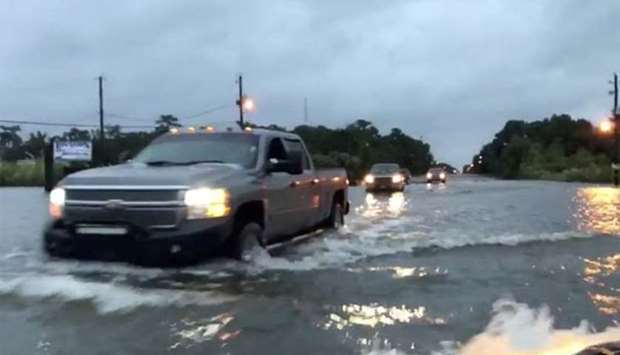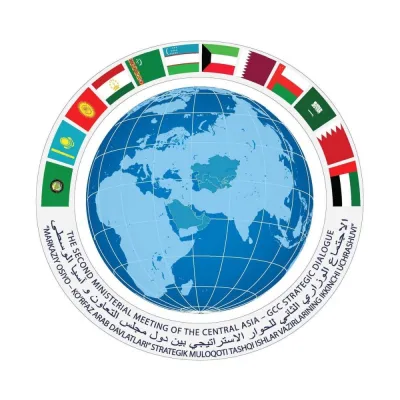Nate eased quickly overnight from one of the fastest-moving hurricanes ever to hit the US Gulf Coast to a fitful and deteriorating tropical depression, but only after flooding streets and casinos, pitching boats onto beaches and leaving thousands without power.
The storm, once predicted to hit the mainland as a powerful Category Two storm, had left a trail of death and destruction in Central America.But it weakened rapidly overnight after making landfall twice as a Category One storm -- first in southeastern Louisiana and then along the Mississippi coast -- its impact far less severe than predicted.
"Rapid weakening anticipated," the National Hurricane Center (NHC) reported.
There were no immediate reports of deaths or injuries, and the extent of damage was far less devastating than earlier hurricanes had inflicted.
New Orleans, ravaged by Hurricane Katrina in 2005, was largely spared, and Mayor Mitch Landrieu lifted a mandatory curfew after only an hour.
Around the region, crews were already at work on Sunday restoring power to the estimated 100,000 customers who lost it.
Emergency shelters prepared to close their doors as evacuees headed home to assess the damage. Airports were reopening. Oil companies prepared to return workers to oil and gas rigs in the Gulf of Mexico that had been evacuated.
At 11:00 am, the storm had top winds of only 35 miles (55 kilometres) per hour and was moving north-northeast, approaching Birmingham, Alabama at a speed of 24 miles per hour, the NHC said. All coastal warnings have been discontinued.
Still, official reports and social media posts described streets flooded or blocked by fallen trees in several areas.
A Twitter post showed water lapping outside the convention center in Mobile, Alabama; another showed waves pouring through a parking garage in Biloxi, Mississippi, rocking a half-submerged pickup truck. Some highways around Biloxi were underwater.
Wind-driven waters had surged over seawalls in Mississippi -- which had not been hit by a hurricane since Katrina -- covering roads and highways with debris and sand. Several hotels along the coast and some of the state's 12 casinos experienced flooding, the Sun Herald newspaper reported.
Authorities warned of a continuing threat of tornadoes as the storm tracks northward.
New Orleans saw barely an inch (2.5 centimetres) of rain, but parts of southern Alabama had up to six inches. Some outlying parts of New Orleans experienced flooding, but the city's Times-Picayune newspaper summed up Nate's passage as a "whimper, no bang."
The New Orleans levee system has been considerably fortified since Katrina, and the damage reported on Sunday was mainly outside the levee protection area.
The storm is expected to bring mostly heavy rains as it moves toward Tennessee and Kentucky.
Nate will, nonetheless, go down in history as part of one of the most destructive hurricane seasons in years, coming hard on the more devastating heels of storms named Harvey, Irma and Maria. It was the ninth named hurricane this year.
At one point, the National Weather Service reported, Nate's forward motion of 28 miles per hour was the fastest ever recorded for a hurricane in the Gulf of Mexico. Its speedy passage helped alleviate flooding -- in contrast to the way Hurricane Harvey's sluggish passage produced record flooding in parts of Texas.
But fearing the worst, officials had braced for Nate, urging residents to evacuate low-lying coastal areas.
In Alabama, Dauphin Island Mayor Jeff Collier described limited damage, and a sense of relief.
"We have had some homes flooded, numerous vehicles, things of that nature... We don't believe we have had any types of injuries from this," he told CNN.
"Fortunately, I can say that in the last hour, I think the worst is now behind us."
US President Donald Trump has released federal aid to help mitigate the storm's impact in Alabama, Louisiana and Mississippi.
Officials said the recent hurricanes, devastating as they were, actually helped with preparations for Nate, since emergency supplies and assets deployed for the earlier storms were still in place.
Still, experts say it could take months, or more, for the United States to recover from hurricane Harvey, which tore through Texas and then Louisiana in August, and Irma, which slammed Florida in September, as well as from Maria, which inflicted catastrophic damage to the US territory of Puerto Rico and other Caribbean islands in late September.
Brock Long, administrator of the Federal Emergency Management Agency (FEMA), acknowledged on Sunday that his resources were "strained" as it continued to work on "massive issues" from the year's storms. But he insisted on ABC that the agency was well positioned to deal with the damage from Nate.
When Nate struck Central America on Thursday and Friday, at least 31 people were killed and others were still missing.



